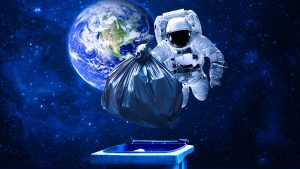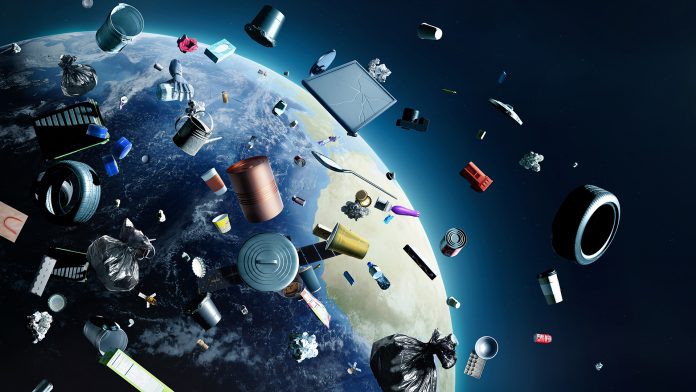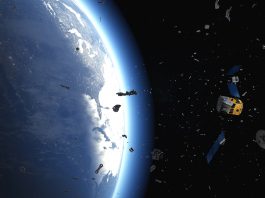The Space Age is leaving fingerprints on the stratosphere – one of the most remote parts of the planet – which has potential implications for climate, the ozone layer, and the continued habitability of Earth.
Using tools hitched to the nose cone of their research planes and sampling more than 11 miles above the planet’s surface, researchers have discovered that the Space Age has resulted in significant amounts of metals in aerosols in the atmosphere.
The increasing amount of debris is likely due to more frequent launches and returns of spacecraft and satellites.
This mass of metal is changing atmospheric chemistry in ways that may impact Earth’s atmosphere and the ozone layer.
The study, ‘Metals from spacecraft re-entry in stratospheric aerosol particles,’ is published in Proceedings of the National Academy of Sciences.
The rising use of metal and polluting materials in space
“We are finding that the Space Age has released human-made materials in what we consider a pristine area of the atmosphere,” said Dan Cziczo, one of the study’s authors.
The team detected more than 20 elements in ratios that mirror those used in spacecraft alloys.
They found that the mass of lithium, aluminium, copper, and lead from spacecraft re-entry far exceeded those metals found in natural cosmic dust.
Nearly 10% of large sulfuric acid particles – the particles that help protect and buffer the ozone layer – contained aluminium and other spacecraft metals used in the era of the Space Age.

Scientists estimate that as many as 50,000 more satellites may reach orbit by 2030. The team calculates that means that, in the next few decades, up to half of stratospheric sulfuric acid particles would contain metals from re-entry.
What effect that could have on the atmosphere, the ozone layer and life on Earth is yet to be understood.
The Space Age is in full swing, but how does this impact space pollution?
Spacecraft launches and returns were once international events. The launches of Sputnik and the Mercury missions were front-page news.
Now, a quickening tide of innovation and loosening regulation means that dozens of countries and corporations are able to launch satellites and spacecraft into orbit and fuel the Space Age.
All those satellites must be sent up on rockets, and most of that material eventually comes back down.
The Space Age has left behind a trail of metals that may change the atmosphere in ways scientists don’t yet understand.
“Just to get things into orbit, you need all this fuel and a huge body to support the payload,” Cziczo commented.
“There are so many rockets going up and coming back and so many satellites falling back through the atmosphere that it’s starting to show up in the stratosphere as these aerosol particles.”
He concluded: “Changes to the atmosphere can be difficult to study and complex to understand.
“But what this research shows us is that the impact of the Space Age on the planet may be significant. Understanding our planet is one of the most urgent research priorities there is.”









